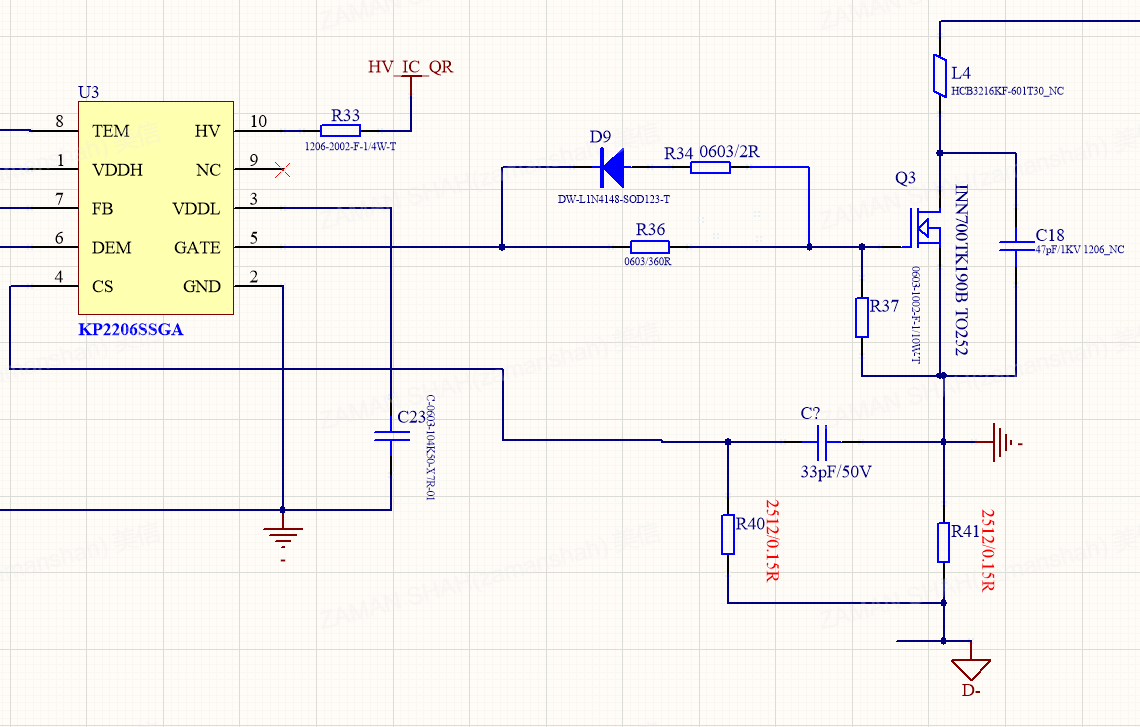I am currently designing a GaN-based 140W PFC+QR converter, with the QR switching frequency set at 140kHz. While both the PFC and QR sections are operational, I am encountering an issue where the QR side is heating up significantly.
I have attached a screenshot of the QR controller circuithttp://kiwiinst.com/productinfo/1250338.html. My confusion lies in understanding how the current is sensed on pin 9 (CS) of the QR controller. Typically, current sensing is done using a sense resistor (Rsense) followed by an RC filter, but the method used here seems different, and I am unsure if it is correct.
Additionally, I am using a gate resistor (R36) of 360 ohms for the GaN transistor, I share shematic part. I suspect that this value might be too high, causing the GaN transistor to switch too slowly and generate excessive heat. My colleague suggested lowering the Rg value, but this resulted in very high VDS spikes.
I would greatly appreciate any insights or suggestions on the following points:
The current sensing method used on pin 9 (CS) of the QR controller. The appropriate value for the gate resistor (R36) to balance switching speed and VDS spikes. Thank you in advance for your assistance


